TABLE OF CONTENTS
Liquid cooling is one of the best tools you can use to keep your PC nice and chilly even under heavy loads.
It’s safe to say that liquid cooling is unparalleled when it comes to its combination of cooling, aesthetics, and “cleanliness” that it can provide.
But it’s no secret that liquid cooling takes a lot more manual maintenance than good ol’ fashioned air cooling.
So, in this article, we’ll look at how long your liquid cooling setup might last, when and why you might need to flush and clean out your liquid cooling setup and how to do it, and just figure out what sort of maintenance you might need to do in general.
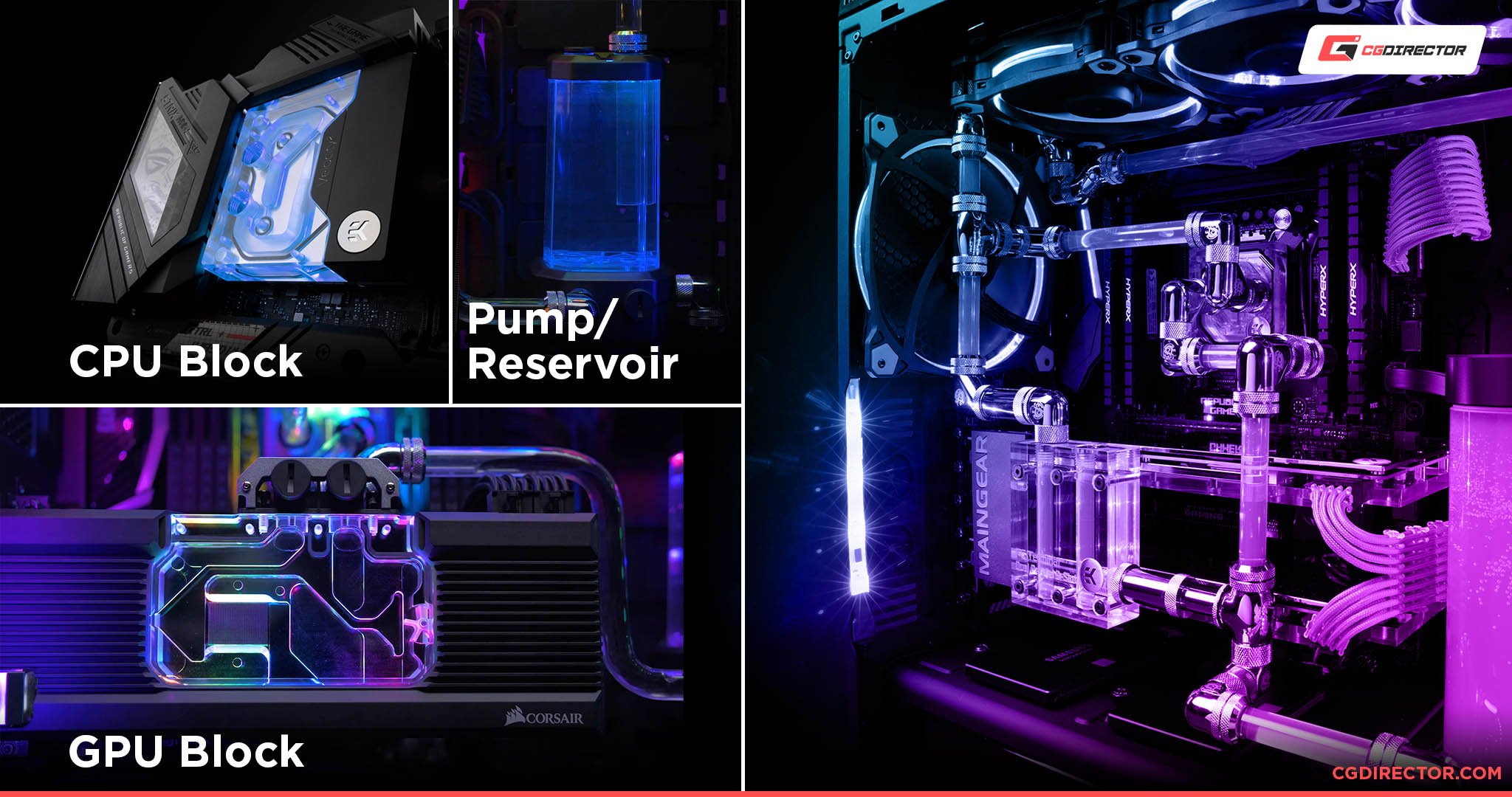
Does Liquid Cooling Need a Lot of Maintenance?
It really depends on what your definition of “a lot” is. But it’s definitely more than air cooling.
You can get away with cutting corners, but as with all things concerning a PC, regular maintenance should be a part of your schedule.
And liquid cooling isn’t any different. This is especially true for a custom liquid cooling setup.
You should generally try to fully flush, clean, and put in new coolant into your liquid cooling setup every year. This includes cleaning radiators and fans.
It’s a lot more simple for AIO (All In One) liquid cooling setups, however. You usually don’t have to bother with any liquid maintenance as it’s all sealed securely. So all you need to do is clean the radiator(s) and fan(s) and you’ll be set.
How Do You Find Out if Your Liquid Cooling Setup Needs Maintenance?
There are two main ways to find out if your liquid cooling setup needs maintenance.
Visual checking and temperature monitoring.
You should first visually check your liquid cooling loop and see if there are any patches of discoloration, cloudy-looking water, metallic flakes, or rust/corrosion.
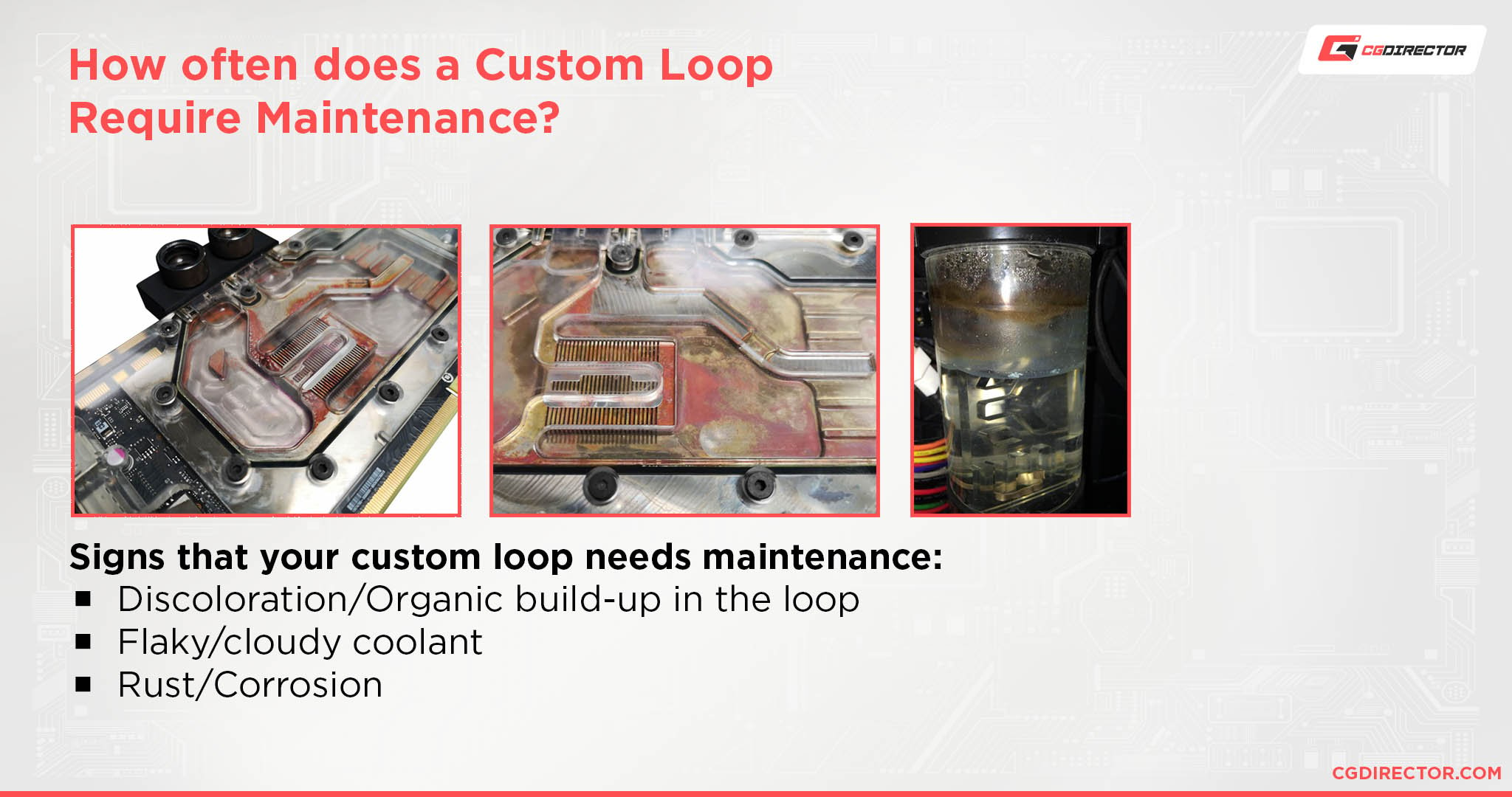
EKWB’s custom loop signs of needing maintenance such as discoloration and organic build-up.
If the visual inspection looks all good, then you need to look at the temperatures. Monitor your idle temperatures and heavy load temperatures.
Does your CPU/GPU idle at very high temperatures? Does the temperature of your CPU/GPU rise up to dangerous levels (90 – 100°C) the moment any sort of heavy load gets put on them?
That might also indicate some sort of fault in the cooling. Though it doesn’t help us narrow it down to any specific cause.
But those two methods combined should allow you to figure out when you might need to clean your liquid cooling setup.
Though I generally recommend a more proactive approach by making sure to clean your setup on a regular basis, usually about once a year.
How Long Does Liquid Cooling Last in General?
It’s different depending on what type of liquid cooling you use. Are you using professionally made AIO solutions? Or do you have a custom liquid cooling setup?
Generally, a well-made AIO water cooler can last you about 3 – 6 years. Whereas with custom solutions, they usually don’t last as long. Usually just 1 – 3 years without any sort of maintenance.
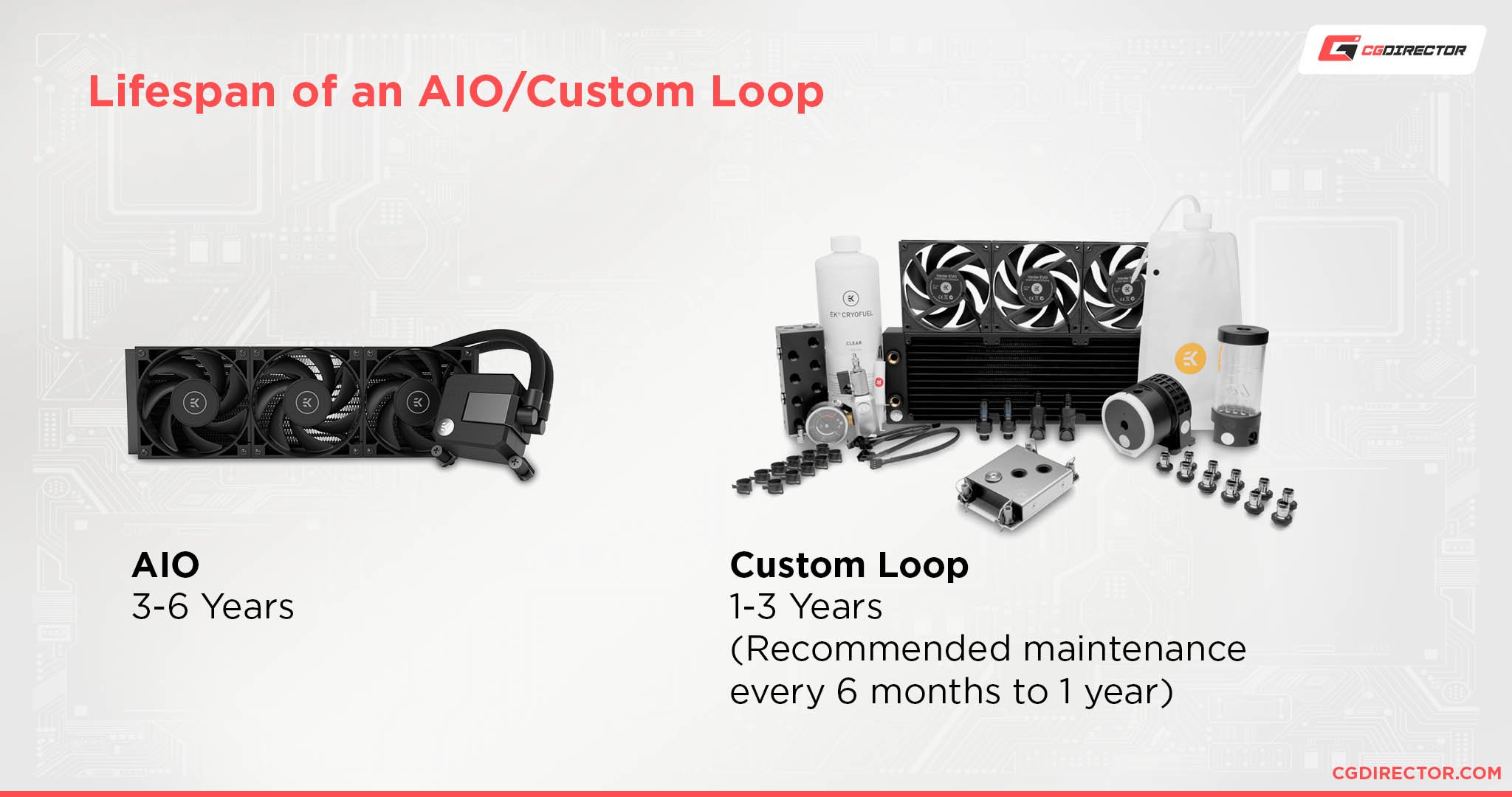
Of course, if properly taken care of, meaning cleaned and flushed on a regular basis, even a custom setup can go toe to toe with an AIO and beyond.
But the main thing is that a custom solution will always need a lot more manual maintenance by you to last as long as an AIO. It’s not a set it and forget it solution.
In Summary
Hopefully, that explained everything you wanted to know about the maintenance cycle of a liquid cooling setup!
Liquid cooling can definitely be a lot more of a hassle than air cooling, but when done right, it can be an absolute marvel.
So it’s crucial to make sure that you’re taking the proper precautions to keep any contaminants away if you’re working on a custom liquid cooling setup, and making sure to use proper coolant with anti-fungal and anti-corrosion agents.
That, plus regular flushes and proper cleaning will make your liquid cooling setup last for years without any issues.
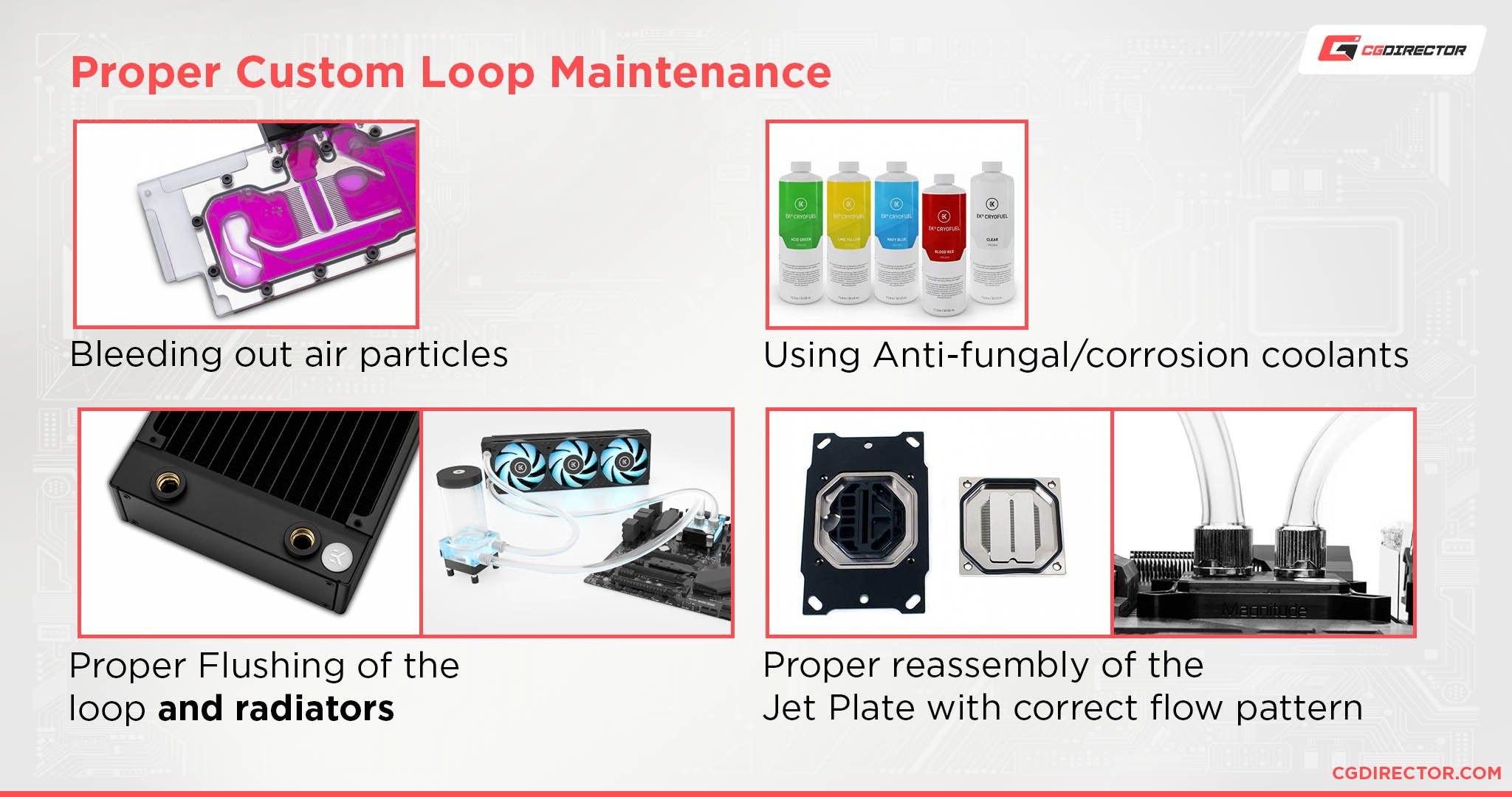
FAQ
Does Liquid Cooling Coolant Go Bad?
No. Regular water cooling doesn’t make use of liquids that can go bad.
A large percentage of all water cooling setups use distilled water. Some setups use premixed water cooling solutions.
Regardless of what the liquid used is, it won’t just go “bad.”
It can certainly dissipate (if it’s water, and mostly just on custom solutions, but it can happen to some AIOs as well) and need to be topped up, but it will never go “bad” out of nowhere unless some sort of outside contaminants (mold, bacteria, corrosion, etc.) gets into the loop.
And the chance of that happening is very, very rare with an AIO, and pretty rare with a custom solution if you were careful and sanitary when making it.
So it’s a non-issue with AIOs and all you need to do to make sure that mold, bacteria, corrosion doesn’t get into your custom solution is to either use easily available anti-fungal and anti-corrosion agents if you’re using water or just using a premixed liquid cooling solution.
What Is the Liquid Used in Liquid Cooling?
There are a wide variety of things that people have used in liquid cooling setups, but, generally, the most widely used liquid when it comes to liquid cooling is water.
More specifically, distilled water that has had any mineral impurities taken out.
This is also the second cheapest (first being straight tap water, which is not recommended) and the most recommended option when it comes to water cooling.
There are of course other liquids that people use as well. The main ones are “premixed liquid cooling solutions.”
Which is basically distilled water, or some other liquid, mixed with anti-fungal and anti-corrosion agents so that you don’t have to juggle liquids and chemicals and all that on your own and can just use something that’s ready-made instead.
What’s the Best Coolant for Liquid Cooling?
This is a bit of a divisive topic in the community.
Some people swear by premixed solutions, others wonder why you’d bother paying so much for a tiny amount of premixed solution when you can get gallons of distilled water for dirt cheap and then add your own anti-fungal and anti-corrosion agents easily.
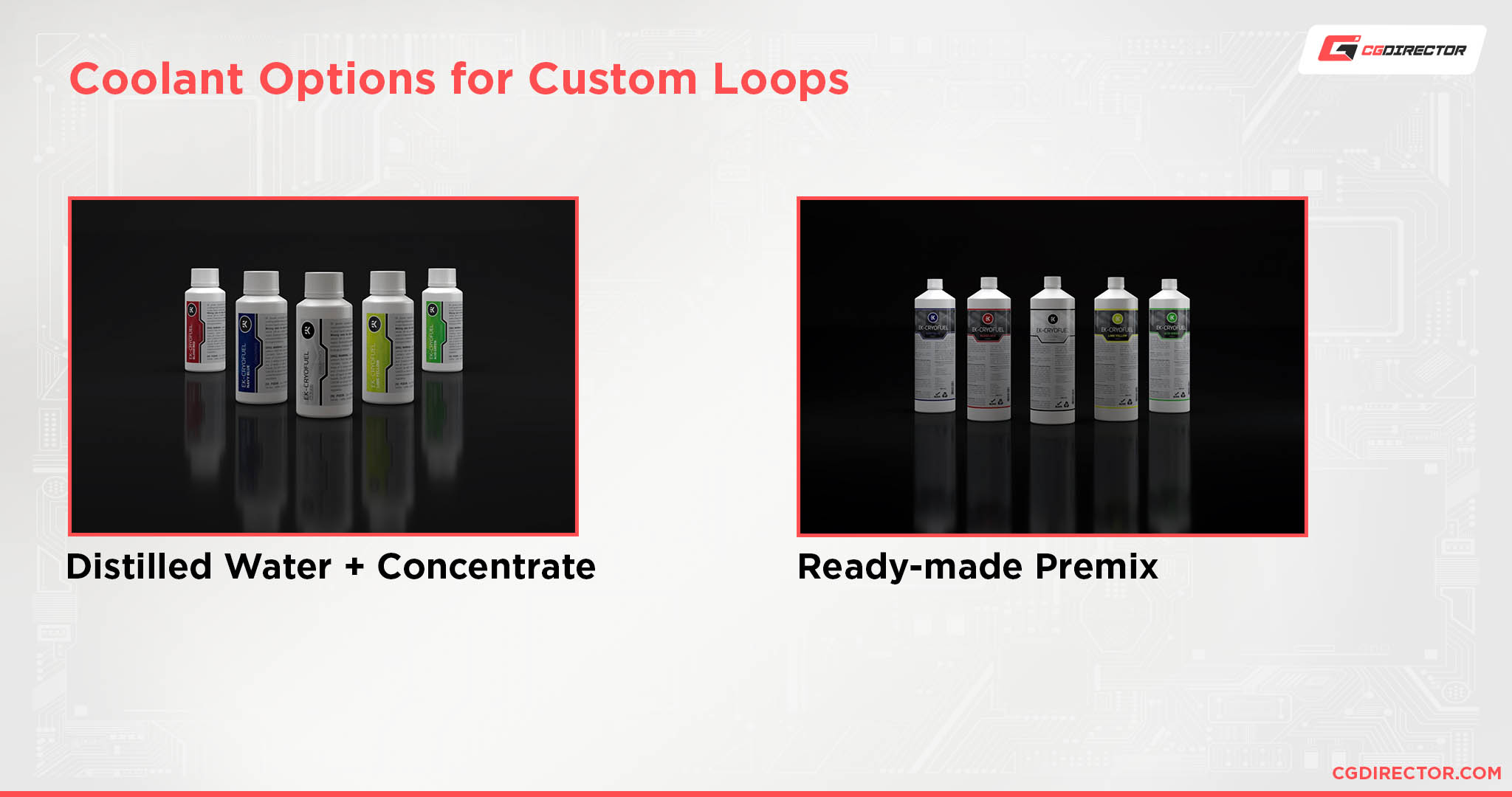
I’m personally in the camp DIYing my cooling liquid because that’s how I’ve always done it and it has worked well for me so far.
But overall, I recommend you use what you feel comfortable with.
If you’re a beginner, I would suggest taking a look at premixed solutions to make your life a little easier, but if you’re the tinkering type and want to save a couple of bucks, you could look into distilled water as well.
Aside from those differences, it doesn’t really matter what type of coolant you use for liquid cooling from a performance perspective. They’ll all have about the same level of performance.
How Do I Know if My Liquid Cooler Is Working?
- Can you see the movement of water in your loop?
- Can you hear the pump running?
- Do your temps look alright?
If you answered yes to all of that, then your liquid cooler is most likely working just fine.
If you answered no to any of it, you might be having some issues.
Over to You
Have any other questions about PC components? Feel free to ask us in the comments or our forum!

![How to Get a CPU Cooler off of a CPU [Un-stick Glued-On Cooler] How to Get a CPU Cooler off of a CPU [Un-stick Glued-On Cooler]](https://www.cgdirector.com/wp-content/uploads/media/2024/03/How-to-get-CPU-Cooler-off-CPU-Twitter-copy-594x335.jpg)
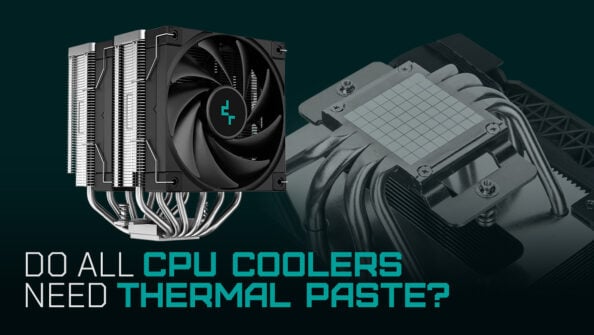
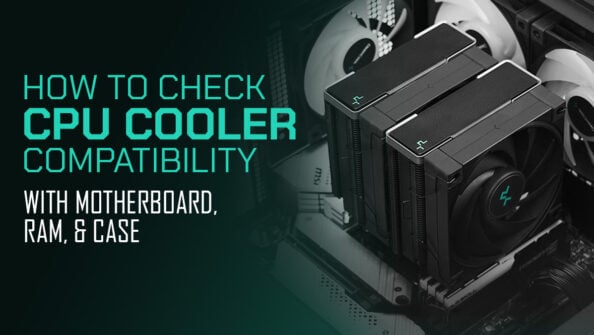
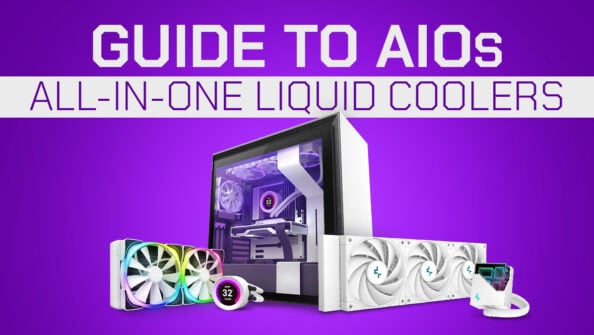

3 Comments
24 October, 2024
Need some advice on my liquid cooling PC
13 December, 2022
When I’ve opened up an AIO I noticed a lot of corrosion and algae buildup. I think that an open loop is the best way to go. I believe an AIO is a temporary fix for cooling.
13 December, 2022
AIOs certainly don’t last forever and their performance degrades over time. Custom liquid cooling sure has many advantages if you’re an advanced enough PC-Builder to set up and maintain it.
Cheers,
Alex